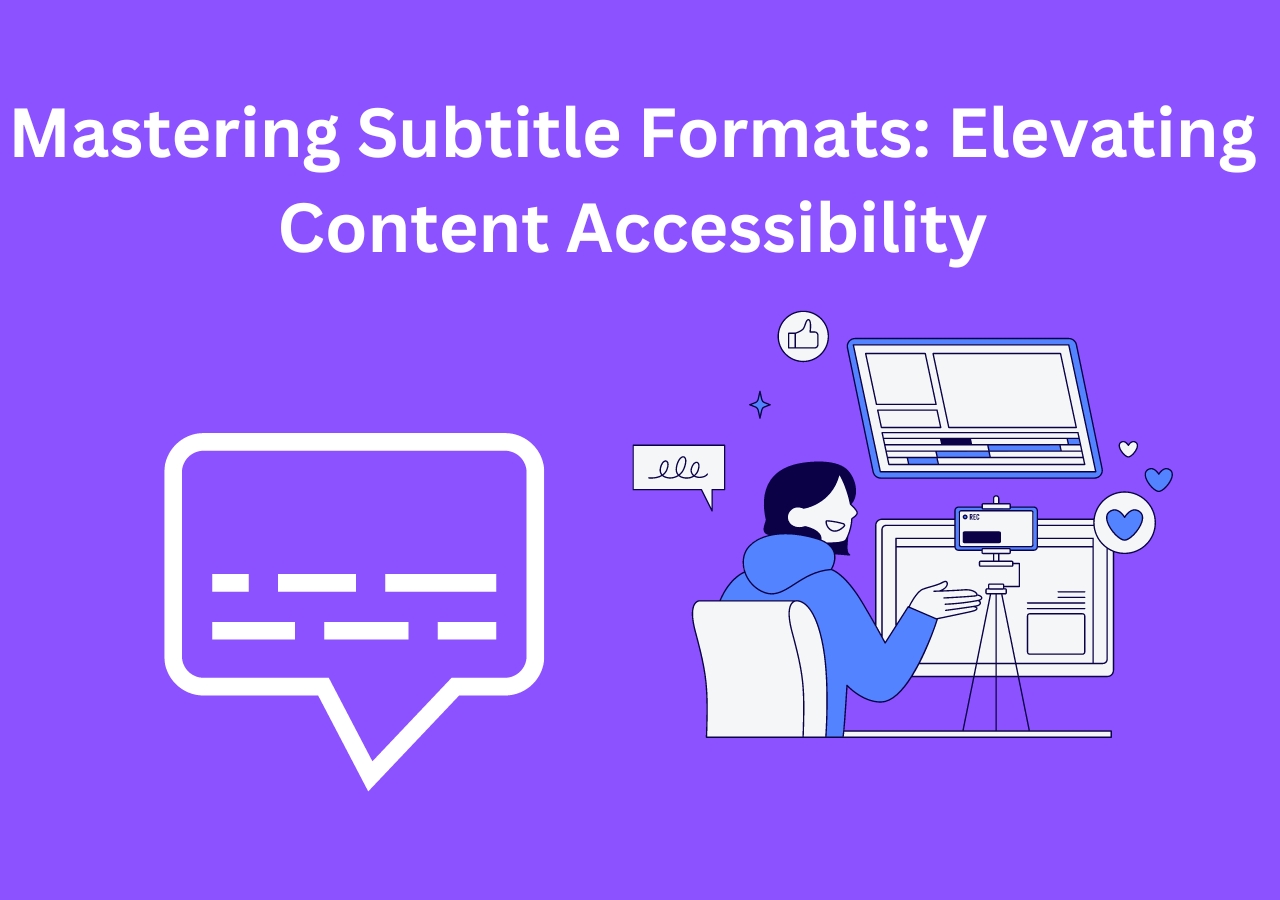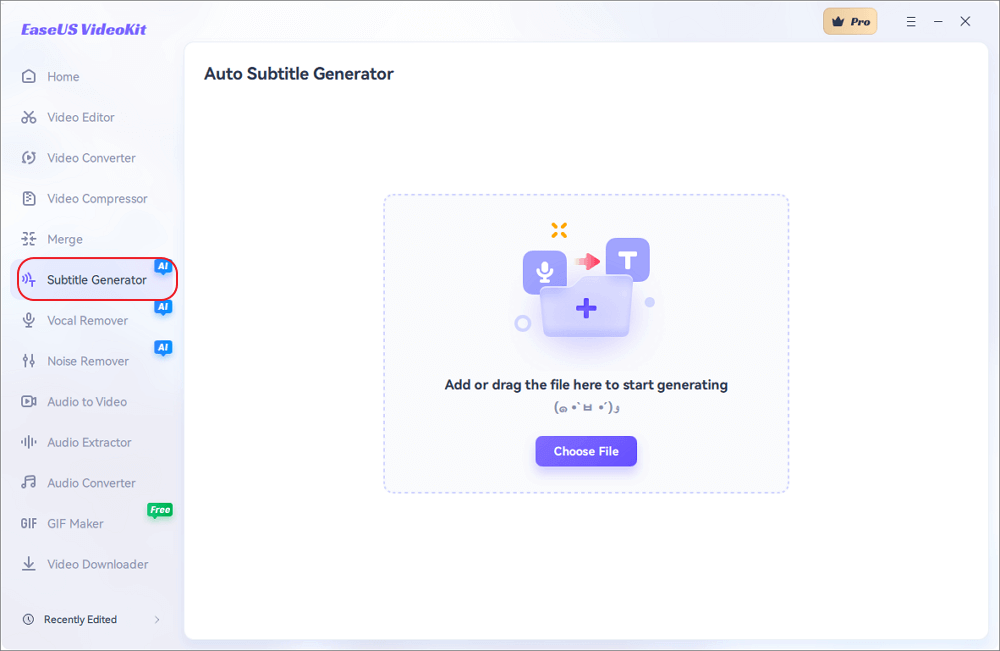-
Jane is an experienced editor for EaseUS focused on tech blog writing. Familiar with all kinds of video editing and screen recording software on the market, she specializes in composing posts about recording and editing videos. All the topics she chooses are aimed at providing more instructive information to users.…Read full bio
-
![]()
Melissa Lee
Melissa is a sophisticated editor for EaseUS in tech blog writing. She is proficient in writing articles related to multimedia tools including screen recording, voice changing, video editing, and PDF file conversion. Also, she's starting to write blogs about data security, including articles about data recovery, disk partitioning, data backup, etc.…Read full bio -
Jean has been working as a professional website editor for quite a long time. Her articles focus on topics of computer backup, data security tips, data recovery, and disk partitioning. Also, she writes many guides and tutorials on PC hardware & software troubleshooting. She keeps two lovely parrots and likes making vlogs of pets. With experience in video recording and video editing, she starts writing blogs on multimedia topics now.…Read full bio
-
![]()
Gorilla
Gorilla joined EaseUS in 2022. As a smartphone lover, she stays on top of Android unlocking skills and iOS troubleshooting tips. In addition, she also devotes herself to data recovery and transfer issues.…Read full bio -
![]()
Jerry
"Hi readers, I hope you can read my articles with happiness and enjoy your multimedia world!"…Read full bio -
Larissa has rich experience in writing technical articles. After joining EaseUS, she frantically learned about data recovery, disk partitioning, data backup, multimedia, and other related knowledge. Now she is able to master the relevant content proficiently and write effective step-by-step guides on related issues.…Read full bio
-
![]()
Rel
Rel has always maintained a strong curiosity about the computer field and is committed to the research of the most efficient and practical computer problem solutions.…Read full bio -
Dawn Tang is a seasoned professional with a year-long record of crafting informative Backup & Recovery articles. Currently, she's channeling her expertise into the world of video editing software, embodying adaptability and a passion for mastering new digital domains.…Read full bio
-
![]()
Sasha
Sasha is a girl who enjoys researching various electronic products and is dedicated to helping readers solve a wide range of technology-related issues. On EaseUS, she excels at providing readers with concise solutions in audio and video editing.…Read full bio
Page Table of Contents
0 Views |
0 min read
Ensuring equal access to content for everyone in this interconnected world is paramount. SDH Subtitles (Subtitles for the Deaf and Hard of Hearing) play a significant role in breaking down barriers and enhancing inclusivity. Whether you're a content creator or editor, understanding SDH subtitles is essential to enhance video accessibility.
This article fosters a deeper understanding of SDH subtitles, from the purpose of SDH subtitles to the technical aspects of their implementation. In addition, this article includes a free automatic subtitle generator to add SDH subtitles to videos.
What Are SDH Subtitles?
SDH subtitles, also known as Subtitles for the Deaf and Hard of Hearing, are more than text on the screen. In addition to expressing a spoken dialogue, SDH subtitles include audio cues like sound effects, speaker, and music descriptions. The main objective is to provide a comprehensive viewing experience for individuals with hearing problems.

🔢SDH subtitles include:
- Dialogue: In addition to transcribing the spoken dialogue of characters, SDH subtitles also mention the character names.
- Sound Effects: Unlike standard subtitles, SDH subtitles often include descriptions of important sound effects.
- Speaker Identification: SDH subtitles indicate which character is speaking. It helps viewers to understand the scenes with multiple characters and quick dialogues.
- Non-Speech Information: To explain the scene, SDH subtitles mention background music, changes in tone or mood, and other auditory cues.
- Descriptions: It also includes descriptions of important visual elements such as people's emotions, facial expressions, body language, and other non-verbal communication.
- Timing and Placement: They appear on the screen at the right moment, in sync with the audio and visuals. SDH subtitles don't affect important visual elements, ensuring viewers can read the subtitles without missing out on-screen action.
Why Use SDH Subtitles?
SDH subtitles serve as a vital bridge between content and accessibility. They offer equal content access to individuals with hearing impairments, making movies, TV shows, and video content more inclusive. Moreover, SDH subtitles benefit non-native speakers, noisy environments, and individuals who prefer reading while watching. SDH subtitles provide the benefits of:
Accessibility: The primary goal of using SDH subtitles is to make content accessible to individuals with hearing problems.
Inclusivity: SDH subtitles create a more inclusive viewing experience. They cover the gap between the content's audio and visual aspects, allowing more viewers to enjoy it.
Enhanced Understanding: The descriptions of important sound effects and non-verbal information allow all viewers to understand the context of a scene.
Equal Access to Information: SDH subtitles in educational content ensure that viewers with hearing difficulties have equal access to information.
How Do Subtitles Work in Video?
SDH (Subtitles for the Deaf and Hard of Hearing) subtitles make audiovisual content more accessible to individuals with hearing impairments. Unlike traditional subtitles that only provide text for audio, SDH subtitles incorporate additional information to enhance the viewing experience. Here's how SDH subtitles work in a video:
Transcription: Subtitles include transcription of spoken words of the characters and other audio elements such as sound effects and music.
Presentation: Subtitles appear in various ways, such as at the bottom of the screen. Different colors or fonts are used to indicate different speakers.
Language Translation: Subtitles can also be used to provide translations for foreign-language content. It allows viewers who need help understanding the original language to follow along.
You may be interested in the below article:
Mastering Subtitle File Format: Elevating Content Accessibility
Choosing the right subtitle file format can help you convey your message easily. It is an important factor when targeting the whole world. Read this post to understand different formats and how to create them.

SDH VS CC
SDH subtitles and Closed Captions (CC) have an identical goal of enhancing accessibility, but there's a clear difference. While CC focuses on adding captions to videos, SDH subtitles incorporate sound descriptions.

Here's a table comparing SDH and Closed Captions subtitles:
| Feature | SDH Subtitles | CC Subtitles |
| Purpose | Provide comprehensive accessibility for the deaf and hard of hearing | Focus on transcribing spoken dialogue for accessibility |
| Sound Effects | Include descriptions of sound effects and auditory cues | Primarily focusing on dialogue might not include sound effects |
| Speaker Identification | Include character identification | No speaker identification in subtitles |
| Non-Speech Information | Add information like music description and emotional context | Lack such descriptions |
| Target Audience | Individuals with hearing impairments | Non-Native Speakers and Individuals in Noisy Environments. |
SDH VS Forced Subtitles
Forced subtitles are used when a video includes foreign language segments that require translation. Unlike SDH subtitles, forced subtitles are not designed for accessibility but for language translation purposes. SDH subtitles aim to provide a comprehensive experience for individuals who can't hear the audio.

| Feature | SDH Subtitles | Forced Subtitles |
| Purpose | Provide comprehensive accessibility to deaf and hard-of-hearing people | Provide translation, especially for text in Foreign Language |
| Sound Effects | Present | Focus on dialogue delivering only |
| Speaker Identification | Mention the character's name | Doesn't include character identification |
| Non-Speech Information | Convey Non-verbal information like music and emotional scenes | Focus only on translation |
| Target Audience | People with hearing impairments | All people who don't understand Foreign Language |
Bonus Tip: Generate and Edit Subtitles with EaseUS VideoKit
To enhance your content accessibility with SDH subtitles, consider using EaseUS VideoKit. This user-friendly tool not only adds text to a video but also offers editing options. With features like automatic transcription, subtitle customization, and time adjustment, EaseUS VideoKit helps creators to make their content more accessible. It allows users to create, edit, and customize subtitles for your videos to enhance their accessibility and engagement.

Here are the key features of EaseUS VideoKit:
- SDH subtitle creation: It helps creates and edit SDH subtitles by transcribing audio with an AI algorithm. You can easily import and edit SRT files if you have a subtitle file.
- Subtitle customization: Though it offers exceptional automatic subtitles generation, users can still customize the subtitles for clarity. There are multiple features to adjust the font size, style and add text effects.
- Background noise removal: It uses AI to analyze and remove background noise in audio and video without quality loss.
- Clear editing interface: It allows users to trim, crop, and remove noise without a watermark.
Why miss out on these incredible features? Download now and revolutionize your subtitle generation with it!
Conclusion
SDH subtitles play a significant role in comprehensively understanding audiovisual content. In addition to transcribing dialogue, it also transcribes sound effects, character identification, and contextual cues. The article mentioned a few reasons for using SDH subtitles and their comparison with other subtitle types.
This article introduced a free method to add and edit SDH subtitles to videos to help users increase video accessibility; EaseUS VideoKit. It is the best auto subtitle generator to help with SDH subtitle generation and editing. It streamlines the process of incorporating SDH subtitles allowing content creators to reach a broader audience.
Help us spread awareness about the importance of SDH subtitles in making content inclusive for everyone. Share this article and contribute to a more accessible digital world!
FAQs on SDH Subtitles
With enhanced media accessibility, SDH subtitles have become essential to ensure inclusivity. Here are some frequently asked questions about SDH subtitles with their answers:
1. What is an example of an SDH subtitle?
An example of an SDH subtitle can be a line of dialogue + a description of a sound effect, such as "Anna (Character): [Knocking on door] Hello, is anyone there?" Such subtitles provide both the spoken words and additional auditory context for a more comprehensive viewing experience.
2. What is SDH on Netflix?
SDH on Netflix means the availability of SDH Subtitles on Netflix videos. Netflix offers a range of content with SDH subtitles, allowing viewers with hearing impairments to watch videos.
3. What is the difference between SDH and non-SDH subtitles?
The primary difference between SDH (Subtitles for the Deaf and Hard of Hearing) and non-SDH subtitles lies in the level of detail provided. SDH subtitles include descriptions of sound effects and other contextual elements, whereas non-SDH subtitles typically focus solely on transcribing audio.
4. What is SDH video quality?
SDH subtitles enhance the understanding of the content for viewers without affecting video quality. SDH video quality refers to the level of visual clarity and detail in the video, which remains unchanged after adding SDH subtitles.




